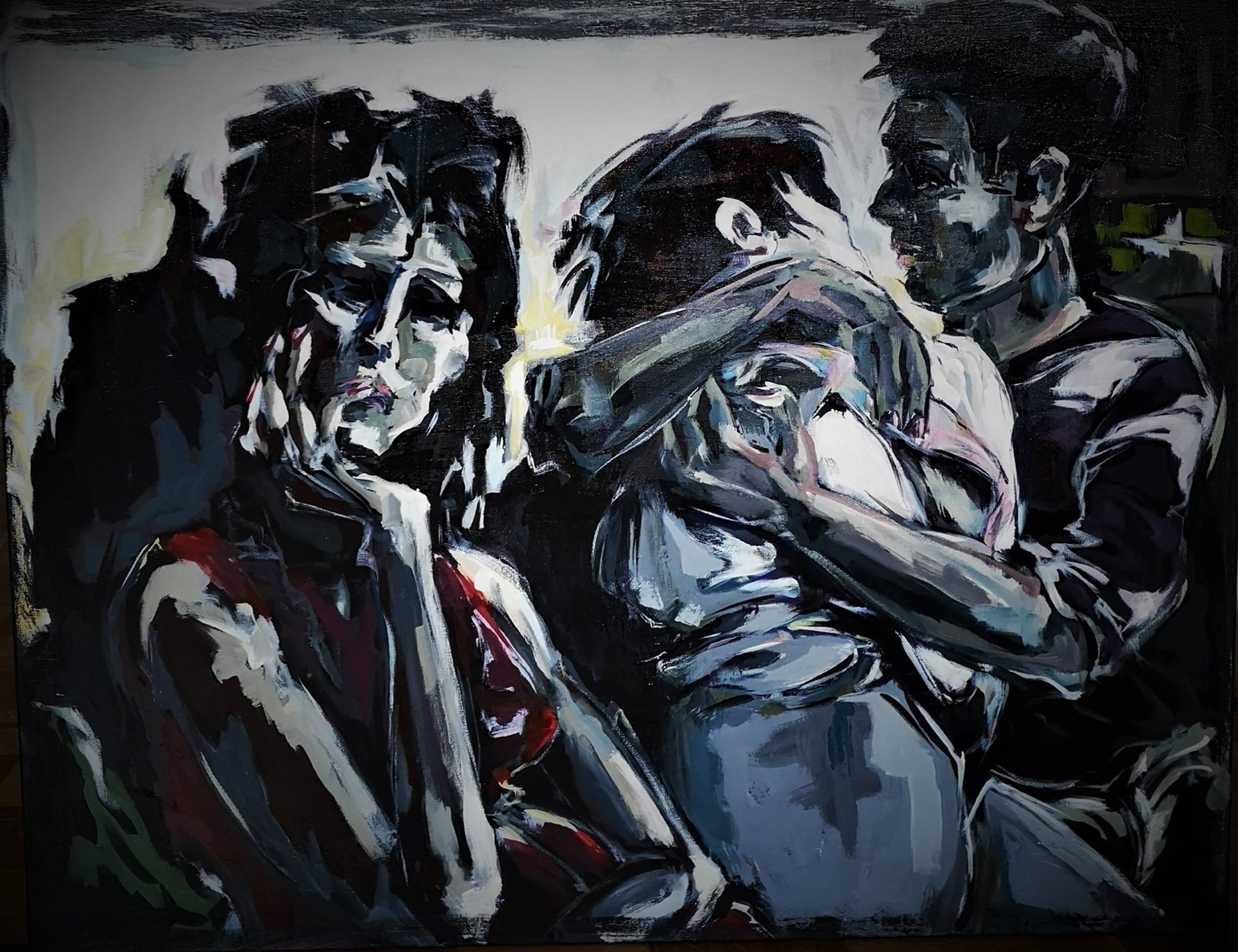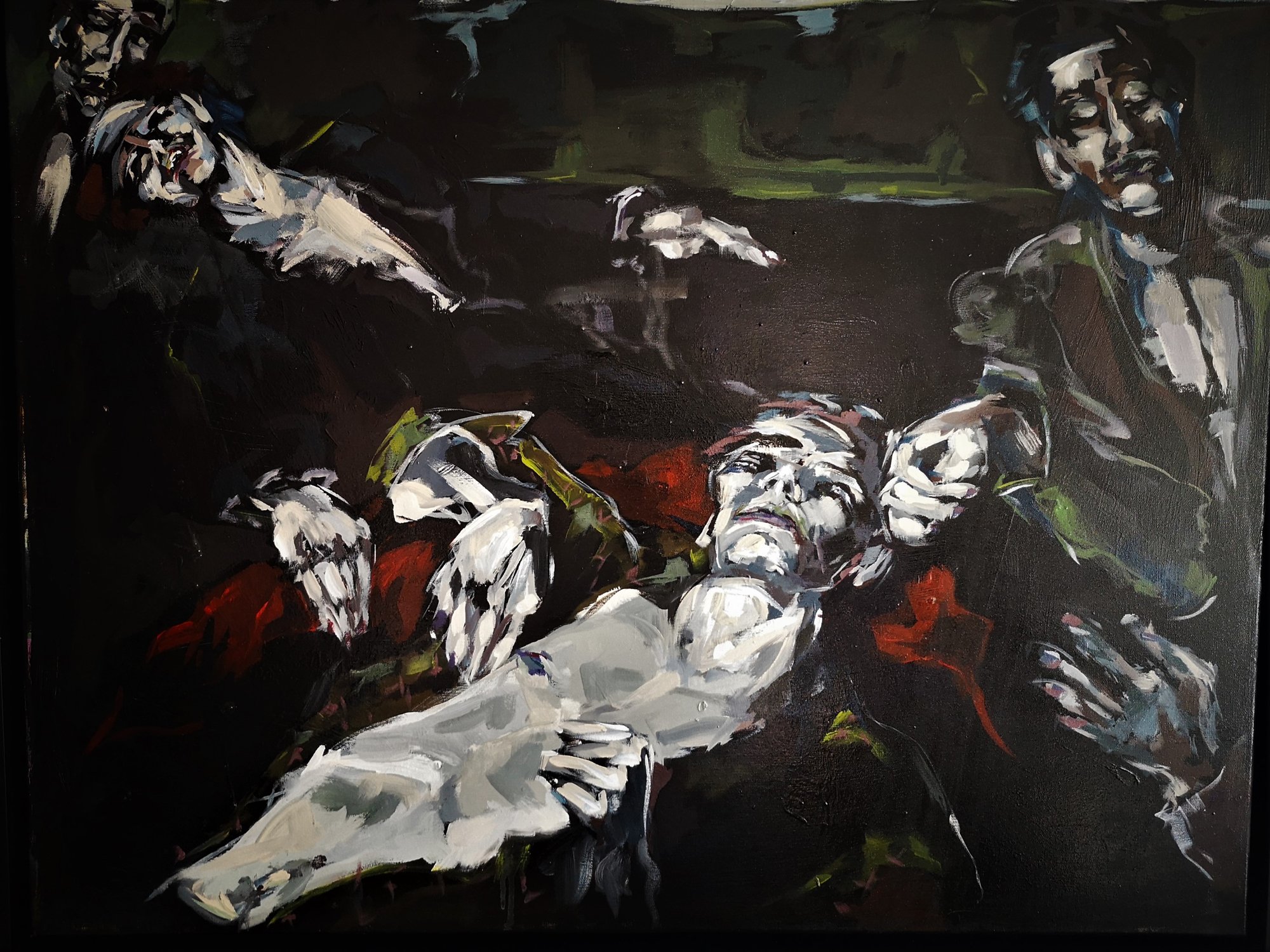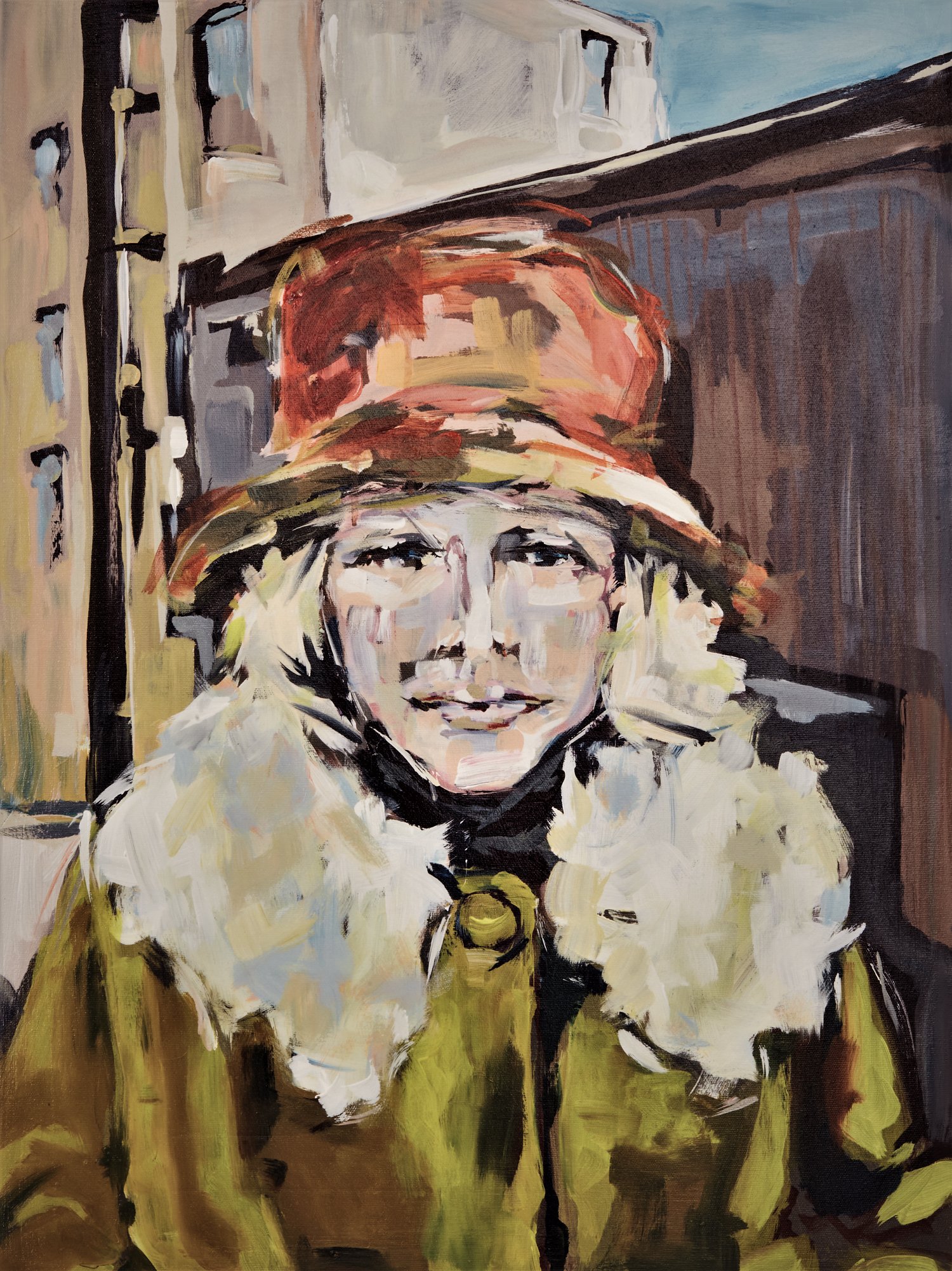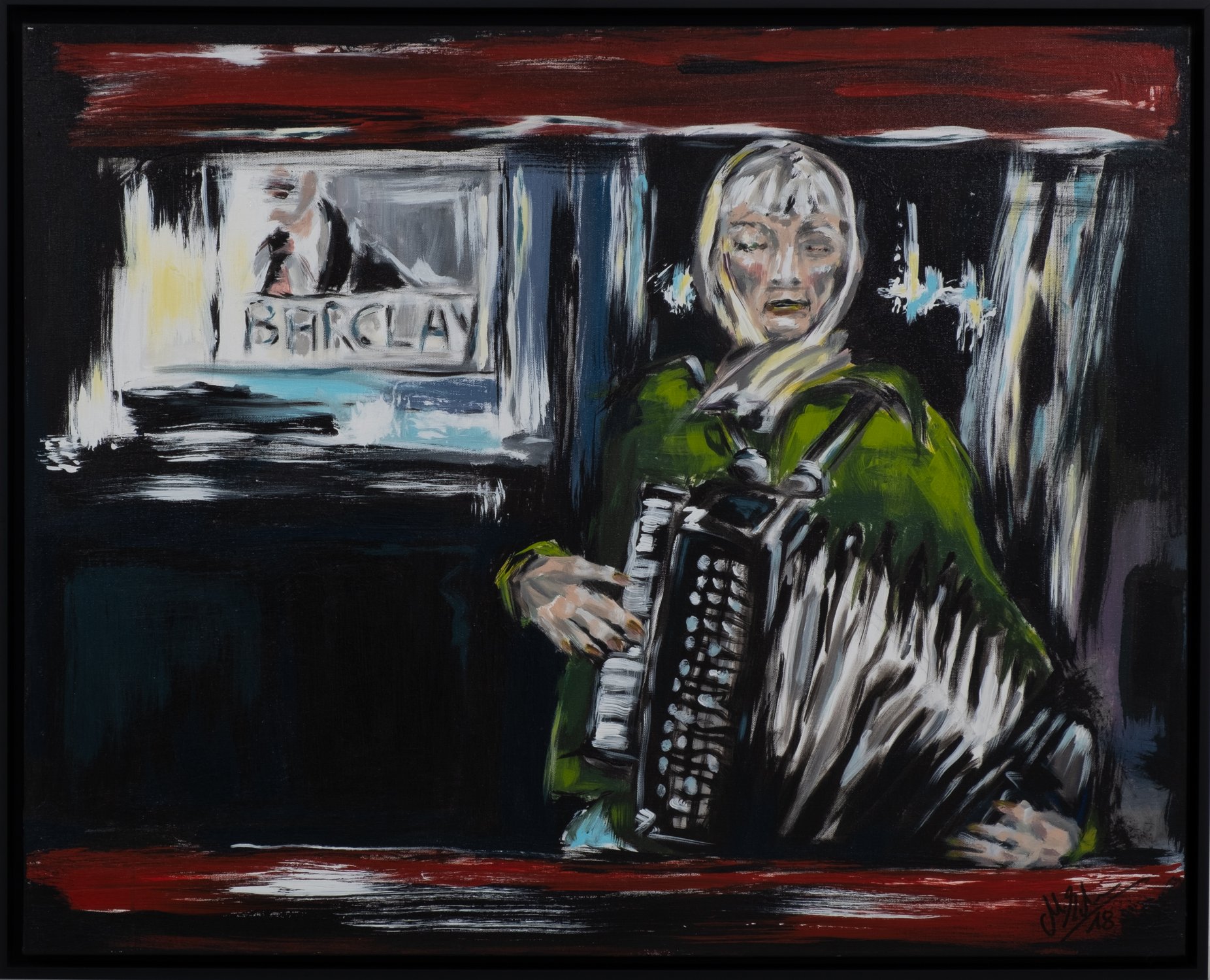Interview
Matthias Eitner
Matthias Eitner was born in 1957 in Schleswig, Holstein. It is Germany's northernmost state that has a beautiful landscape, filled with bright light and clear freshness.
He studied fashion design and painting improvisation from 1982 to 1986, and received a diploma at HAW Hamburg, Armgartstraße. He has visited many European museums and has done comprehensive research on composition and style development.
From 1987 to 1990 he worked as a design assistant for various German enterprises. He later was a stylist and an art director from 1990 to 2014. In 2011, he became a lecturer in Hamburg, and his main focus was intuition as a source of artistic processes. Since 2015, he has become intensively engaged with his art, attending many exhibitions, and submitting his art to numerous curators and art fairs.
What is your background and how did you start your journey in the art world?
“My journey in the art world started since I was young. I had a very inventive childhood. We could say that is how I grew up to be an imaginative artist. Since 2015, my paintings have been created as a reaction to changes in societal structure and new aesthetic standards.
They are declarations of love for humanity and set flaws on the same level as superficially beautiful imagery and living environments. Moments are slowed down and become icons of daily life. The images are, figuratively, advancements of photographic techniques - spontaneous images, snapshots. They are improvisations, raw in form and content. Parallel worlds and ‘the street’ are the most important inspirations for my imagery.”
What does your work aim to say? Does it comment on any current social or political issues?
“We live in a time of silence but with big changes, disruption of old values and old-fashioned techniques, and industrial and digital revolution at the same time. Our society worldwide is turning upside down, and crises are global and in their complexity very exhausting. I find my political role in the center of communicative processes, fighting for dialogue, talking instead of arguing, giving everybody the chance to live their version of being on earth.”
Which current art world trends are you following?
“Trends in the art market are not that important for me. My decision to start a new life as a painter opened a world beyond decoration or intellectual playgrounds. I just took a paintbrush, colors, and canvas and started creating new spaces. I did not even know where this path was leading me. I gave my intuition the chance to show myself what I had hidden inside, throughout a lifetime of consuming art in any variation.
I realized very fast that I probably am a good storyteller, and followed my inner voice! Just like Alberto Giacometti, I feel completely free in my artistic space, to combine whatever comes to my mind. Obviously, abstraction is not in my focus, but a figurative and expressive style, rough and urban.”
Do you plan your work in advance, or is it improvisation?
“There are different parts to the artistic process. It starts with research in different networks to find inspiration and to crystalize a leitmotif, a new theme, for the circle to start. In the following weeks, I reduce the inspiring pictures out of thousands of photographs in a first flush. In the end, I find 12-16 cuttings of relevant photographs, that tell the story I want to convey, and a statement to a certain aspect of the time we all share. A new circle is born!
So far, I work in a planful yet instinctive method at the same time. But the painting itself is intuitive from the beginning. After transferring sketches of the proportions on canvas, I forget about the photographs and improvise the inspirations that I have saved in mind.”
What process, materials, techniques, etc., do you use to create your artwork?
“In this manner of working, digital media and analog techniques are closely connected. Quickly drying colors and coarse brushes evoke speed, intuition, and improvisation in the creation process, as well as give the painting an expressive tone.
Deep darkness, blurred lines and ‘false colors’ create room for interpretation, allowing the addition of your own story, and mirroring complexity.”
“My artworks create spontaneous closeness, as well as harsh rejection - as they should!”
What does your art mean to you?
“Art, in general, is the highest form of communication to me. It’s the perfect tool to make complexity a deep experience. When I listen to Johann Sebastian Bach’s piece ‘Nun danket alle Gott’, I can feel deep inside, what life is all about. Artists are gifted to show contemptuous people, and all the following generations, darkness as the bright side of life, and I am happy to be part of that community.”
What is your favorite artwork and why?
“I can’t name a single artwork, but the artistic life of Raoul Dufy and Alberto Giacometti really impress me. Open-mindedness, independence, honesty and without any vanity, these two artists followed their path. Through observing their paintings and sculptures, diving in there particular cosmos, they became role models to me.”
“All you need to paint is a few tools, a little instruction, and a vision in your mind.”
What inspires you?
“As a lecturer for creativity at a private university in Hamburg, I have told my students a thousand times to dream big, while planning their careers. In my own situation of today, as an absolute beginner in painting, I do exactly the same! Visiting the Biennale of Venice in 2019 named, ‘May you live in interesting times’ curated by Ralph Rugoff, I was drawn in by the worldwide artistic empathy for the contemporary challenges of digital revolution and disruption in our society.
My wife asked me in the ‘Rotonde’, if I could imagine my work between all the other paintings hanging in this particular hall. The simple answer was, ‘Yes!’”
Have you had any noteworthy exhibitions you'd like to share?
“Public exhibitions:
Kunstherbst/ALTONALE 2021
Soloexhibition “LES PRINTEMPS”, 07.2021 Gefördert durch: Hamburg Kreativgesellschaft, Behörde für Kultur und Medien / Hamburg
Art-Essenz, Sony-Center, Berlin, 10.-12.09. 2020
Exhibition “Grenzen aus 3 Perspektiven” DESIGNXPORT/ Hamburg Kreativgesellschaft, “in times of c.”
Soloexhibition “Menschenbilder” 2015-2020 gefördert durch: Hamburg Kreativgesellschaft, Behörde für Kultur und Medien / Hamburg
Galleria De Marchi, Bologna 2019 Trevisan International Art, “Little Treasures”, Award of Excellency
Kunstherbst/ ALTONALE, Hamburg 2019
SWISSARTEXPO, Zürich, 2019
HanseArt, Lübeck 2019
Soloexhibition“Menschenbilder“, Lukas-Kirche, Hamburg, Okt. + Nov. 2018
Art-Essenz, Sony-Center, Berlin 2018”










